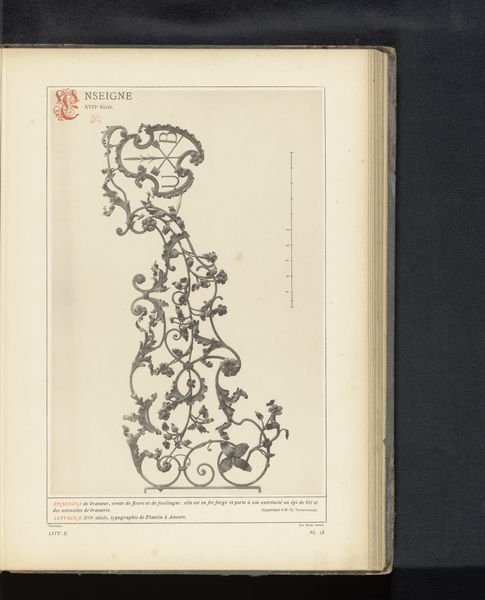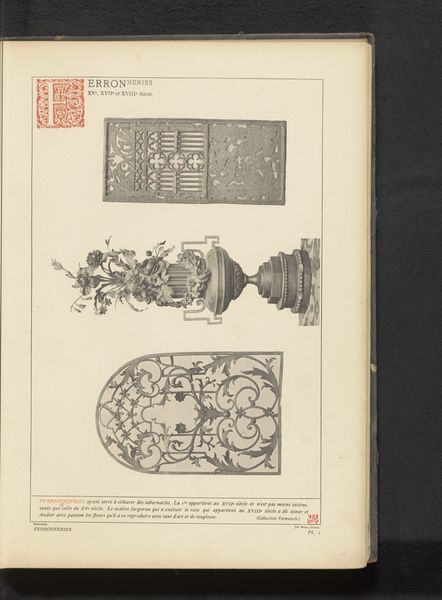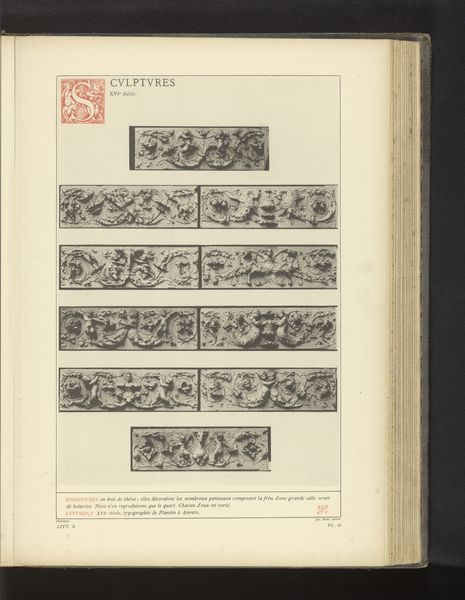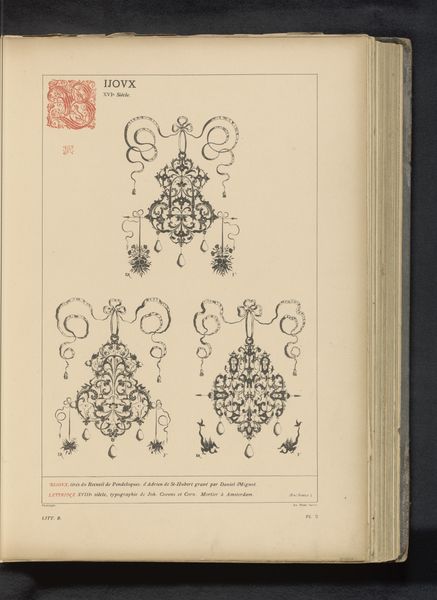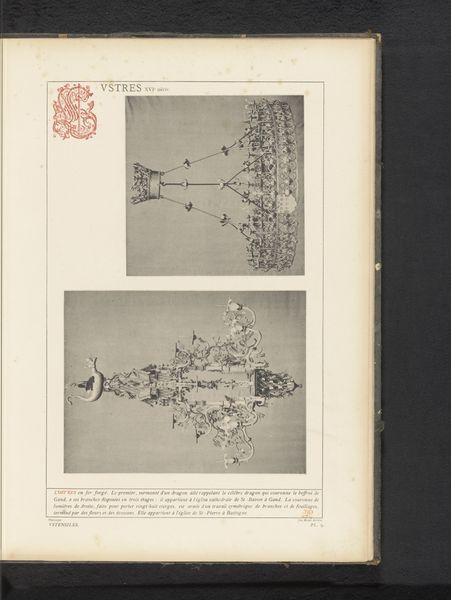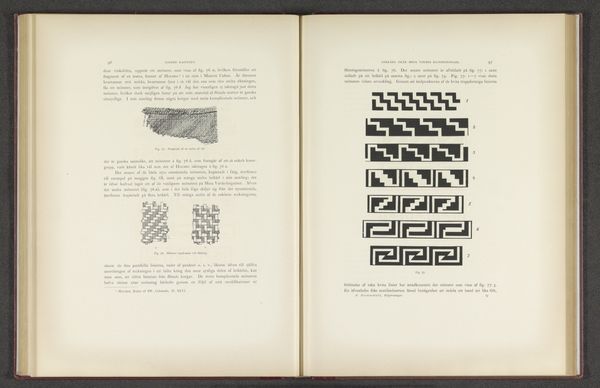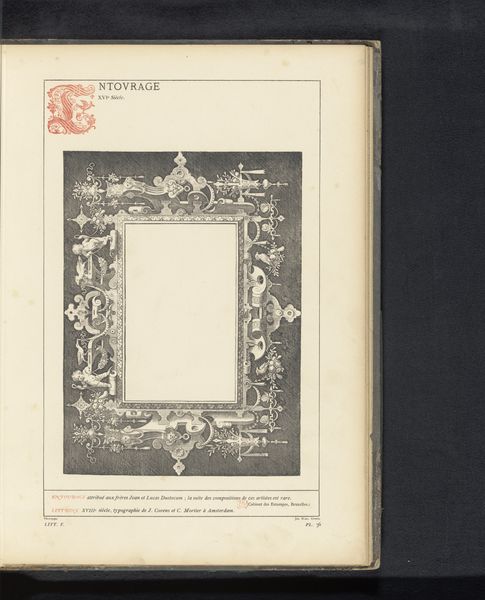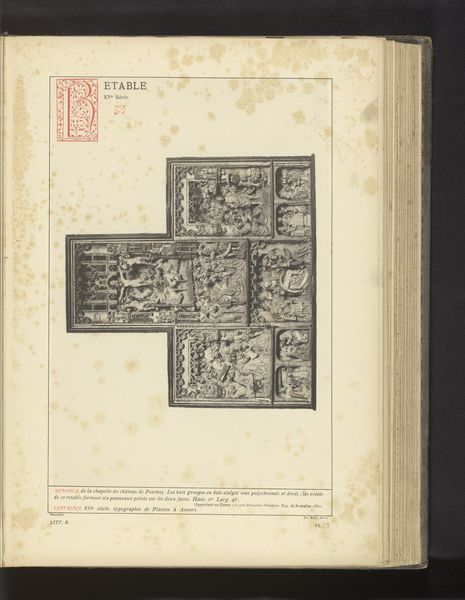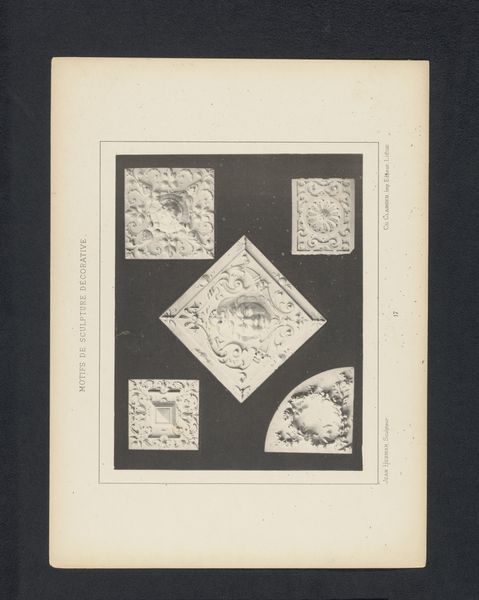
Dimensions: height 341 mm, width 231 mm
Copyright: Rijks Museum: Open Domain
Editor: So, this is a reproduction of a print showing ornament designs by Assuerus van Londerseel, created sometime before 1881. All of the detail is incredible. What historical context shaped the creation and reception of these ornate designs? Curator: That's a great starting point. These designs reflect the lingering influence of the Baroque style. Think about the cultural institutions that would have prized these designs. Ornament prints like these served as inspiration for artisans across various crafts, and would be compiled and used in workshops. Where might this have been located and how might it have circulated through various means and trade networks, impacting workshops and craftspeople? Editor: So, they’re basically blueprints for decoration? How accessible were these to the average artisan? Curator: Exactly. They democratized design, making elaborate motifs available beyond the elite circles who commissioned original artworks. The politics of imagery come into play here – these prints helped disseminate a certain aesthetic, shaping visual culture across different social strata. Does knowing it was printed, allowing this pattern to become popularized, make you think differently about it? Editor: Definitely. It makes me think about the power of printmaking. It’s not just about art for the sake of art, but about shaping taste and influencing craft. Curator: Precisely! These images are an entry point into understanding the intersection of art, industry, and social influence in the 17th and 18th centuries, shaping social tastes beyond individual collections. Editor: I never thought about ornament design in that way before. It's amazing how something seemingly decorative could have such a significant impact on society. Curator: Seeing art as more than just aesthetics is really at the core of what I do!
Comments
No comments
Be the first to comment and join the conversation on the ultimate creative platform.
